
My husband and I spent two weeks in search of the BEST hikes at Death Valley National Park.
Wait…what?
That’s right, we spent 14 days exploring Death Valley National Park and barely scratched the surface. It’s that big.
In an effort to make your planning easier, I’m sharing the absolute best hikes in Death Valley National Park — I’ll cover everything from panoramic views, sand dunes and all the desert delights you simply can’t miss during your first (or tenth) visit.
I’m not one for small talk, so let’s get to the good stuff!
Death Valley National Park Hiking Tips
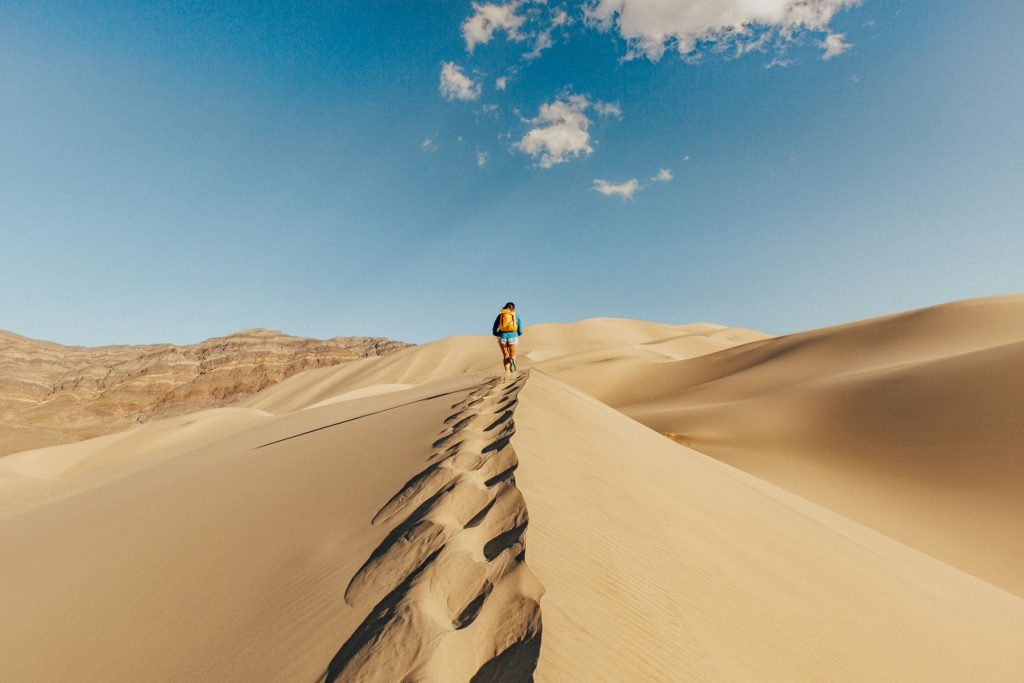
Death Valley Guide Books
- Prior to our trip, we spent weeks scouring maps, reading guide books and perusing online forums. If you find yourself in the same boat, I’d love to save you some time — this is by far the best guide book on Death Valley National Park.
You + Sunscreen = Best Friends (Forever)
- I swear by this sunscreen, I discovered it in France and now buy it in bulk. It works like a charm and doesn’t leave strange residue or smells, you’ll NEVER catch me without it!
Practice Leave No Trace
- If you’re unfamiliar with Leave No Trace, it’s a measure to be a good steward of the land. You can read about the seven principals of Leave No Trace here.
Temperature
- Death Valley National Park holds the world record as the hottest place on earth — the heat is no joke. I suggest visiting the park between October and April for comfortable hiking temperatures.
Wear hiking boots with good traction
- Even though the hiking trails are well maintained, tripping hazards are still common — set yourself up for success by wearing proper shoes.
- These are my hiking boots, and I’d sleep in them if I could.
Cell service in the park is unreliable
- Make sure you’re well prepared in terms of gas, food and water while visiting Death Valley National Park. We were out of service 90% of the time (tip: the best cell service spots we found were at Stovepipe Wells and Furnace Creek).
There are 3 “hubs” that provide gas, lodging and food
- Those hubs are: Furnace Creek, Stovepipe Wells Village and Panamint Springs. In case you’re curious, Death Valley Visitor Center is located in Furnace Creek.
Hiking with pups
- Dogs are NOT allowed on trails, in wilderness or in buildings. Essentially, pups can only go where cars can go, and this isn’t the place to leave your cute pooch in the car.
You may need a vehicle with 4WD
- Many attractions can be reached with a regular vehicle. However, some parts of Death Valley National park require high-clearance vehicles equipped with 4WD. These areas will be clearly noted below.
- If helpful, I wrote guides on Death Valley with 4WD and without 4WD.
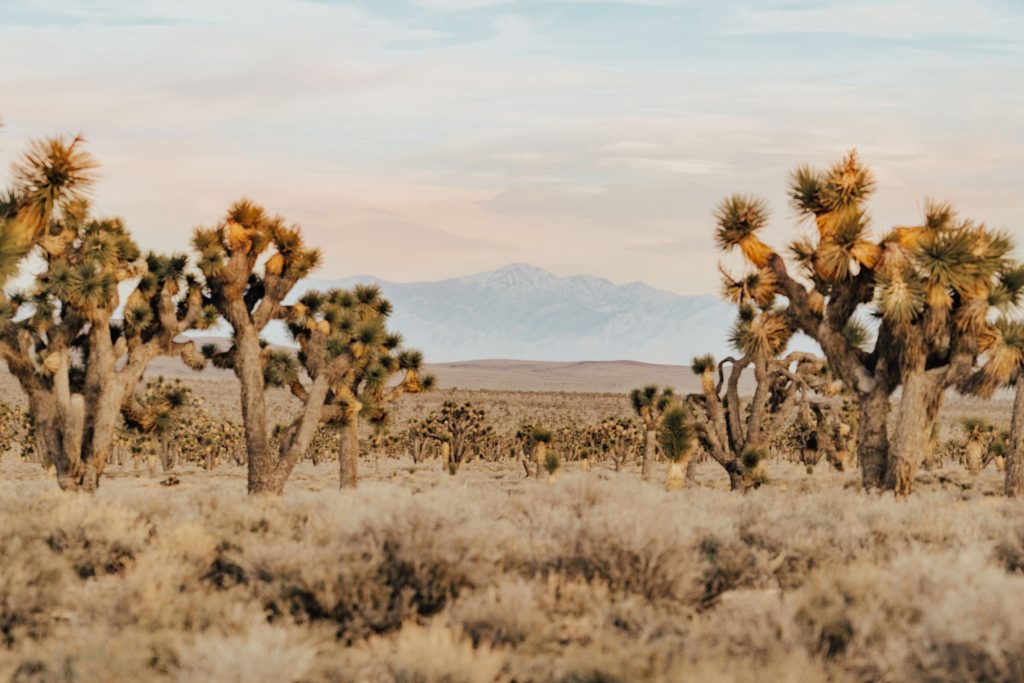
Death Valley National Park Best Hikes
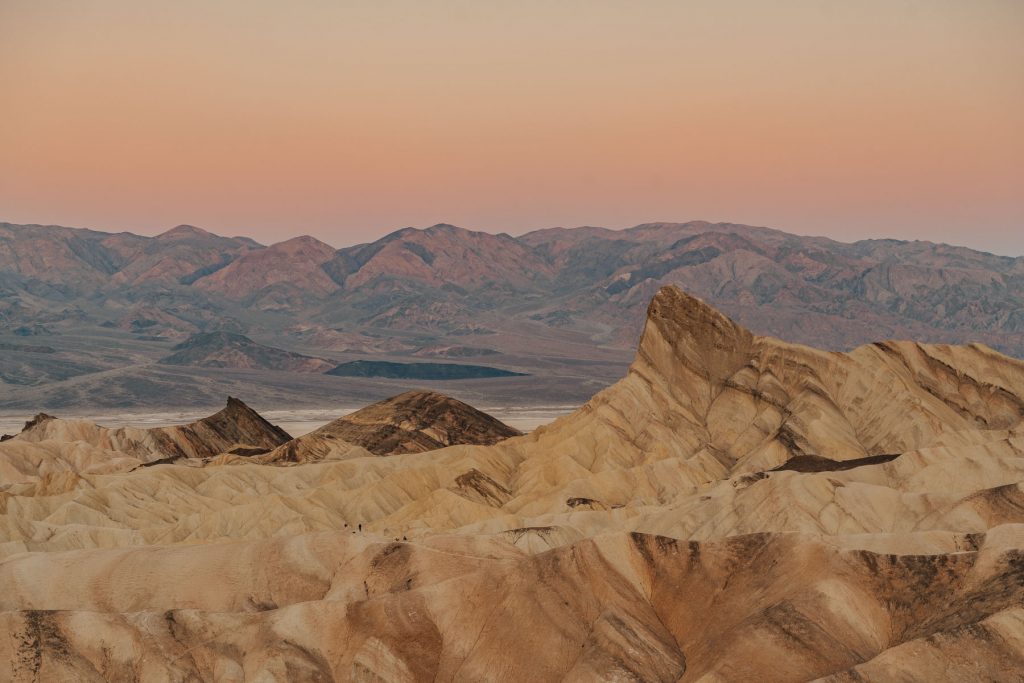
#1. Zabriskie Point
- Difficulty Level: Easy
- Distance: 0.6 miles out and back
- Estimated Hiking Time: 10 minutes
- Elevation Gain: 55 feet
The creme de la creme, if you will. You can’t come to Death Valley and not visit the iconic Zabriskie Point.
There’s a reason photographers flock here in droves to snap award-winning shots during sunrise. It’s awe-inspiring, we were silenced by the beauty.
Pro tip: Arrive as early as possible because this place is popular! To get to the overlook (best spot for photos) simply park your car and hike a quarter mile.
If you’re in the mood of a real adventure, continue down the trail. You will summit hill after hill, all the while soaking in some spectacular views.
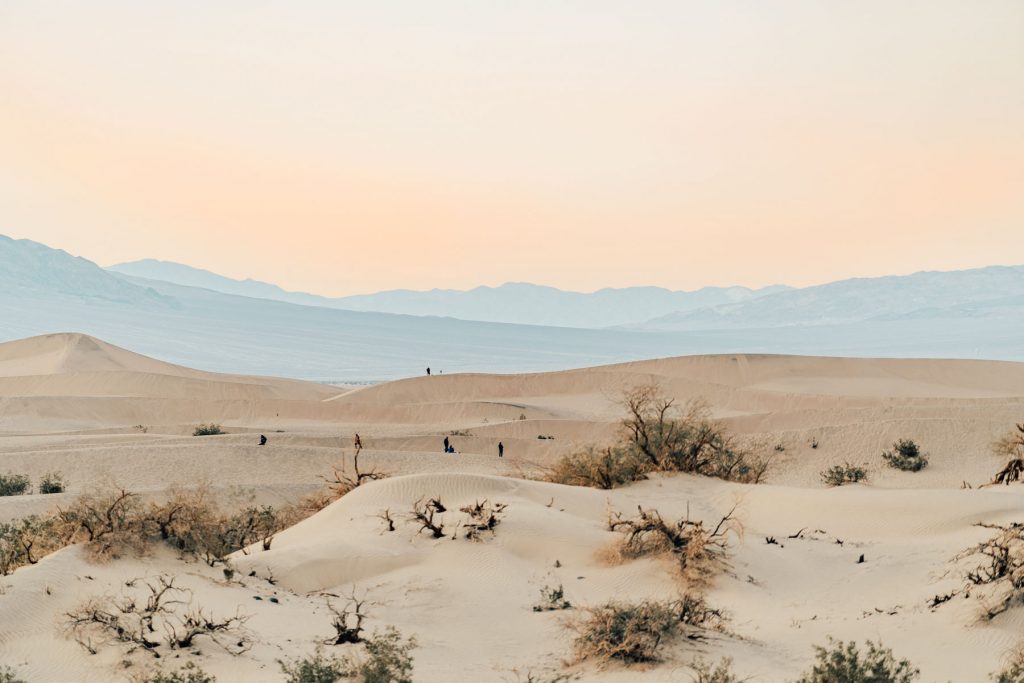
#2. Mesquite Flat Sand Dunes
- Difficulty Level: Easy/Moderate
- Distance: 2 miles round trip
- Estimated Hiking Time: 1.5 hours
- Elevation Gain: 185 feet
Mesquite Flat Sand Dunes is a classic hike at Death Valley National Park!
These is the most accessible dune field in the park and therefore the most popular. We enjoyed out time here so much, we came back three times!
The best time to visit the Mesquite Sand Dunes is during sunrise or sunset, when the glow of the sun graces the vast landscape. Plus, the temperatures will be cooler.
The area is so beautiful, it’s a photographers dream. You’ll see all sorts of photo shoots – from weddings, to senior portraits and engagements. It’s so fun to watch.
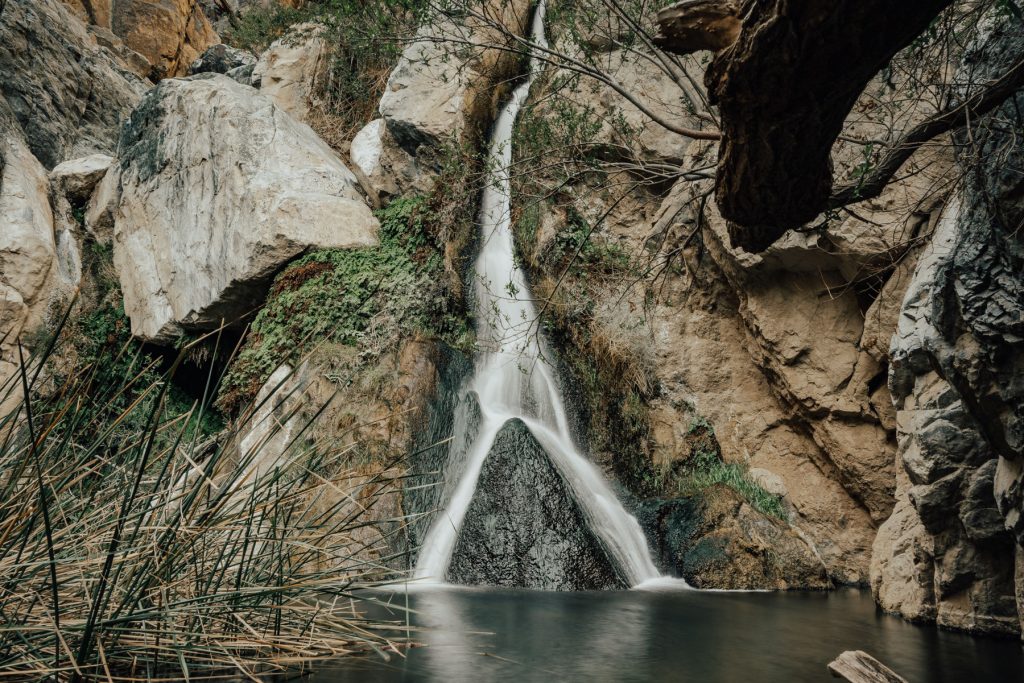
#3. Darwin Falls
- Difficulty Level: Easy
- Distance: 2 miles round-trip
- Estimated Hiking Time: 1.5 hours
- Elevation Gain: 20 feet
A waterfall in the desert? You bet! The first time I saw a photo of Darwin Falls, I assumed it was photoshopped. But I can attest that it is real – I saw it with my own eyes.
This is a great hike because it provides some shade (a rarity in the desert). The trail takes you along dusty canyon before enclosing you in a lush oasis that leads directly to the waterfall. You’ll find yourself ducking under tree limbs, climbing over rocks and crossing running rivers. It’s a blast!
If you’re looking for an adventurous (and easy) hike at Death Valley National Park, this one fits the bill.
We saw a lot of families hiking with kiddos and everyone seemed to be having a great time – which is no small feat with kids. Darwin Falls is a must for all first time visitors.
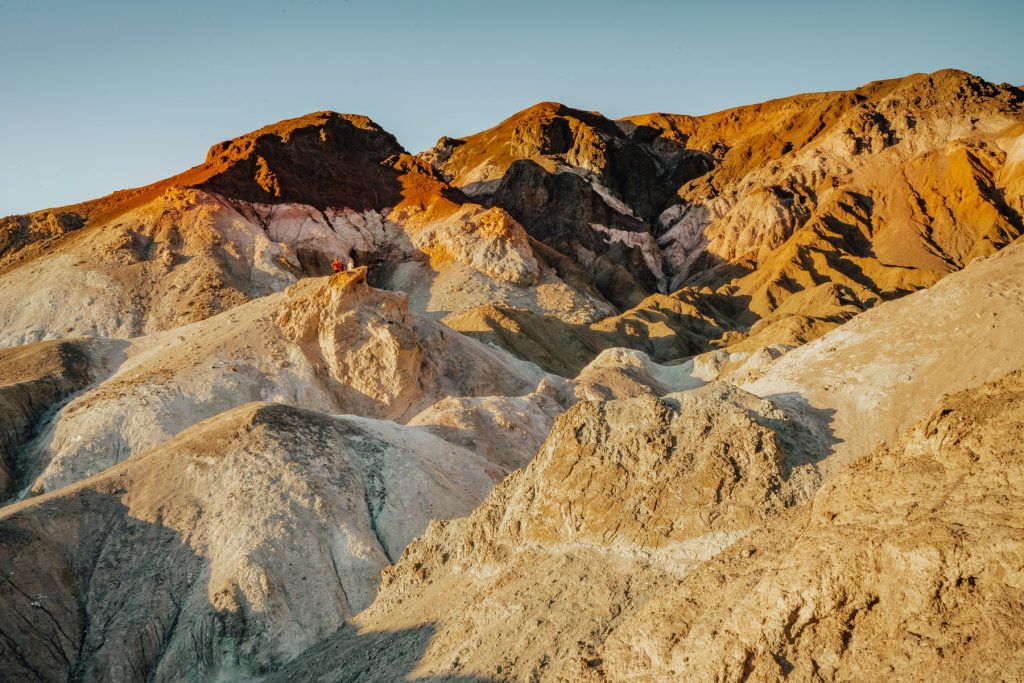
#4. Artist’s Drive
- Difficulty Level: Easy/Moderate
- Distance: half a mile to longer
- Estimated Hiking Time: 30 minutes
- Elevation Gain: Up to you!
I’m sure you’ve seen photos of Artist Drive (it’s all over instagram lately). The phenomenon that occurs here is something else. The colors in the hills are the result of the oxidation of metals.
As with most hikes in Death Valley National Park, sunrise and sunset is the best time to explore the Painted Hills. The sun changes everything about the landscape!
The hike itself starts after a scenic 9-mile drive that takes you directly to a viewpoint overlooking the hills in all their glory. You are allowed to climb into the hills as far (or high) as your heart desires. The distance, difficulty, time and elevation gain is up to you!
A restroom is available at the trailhead.
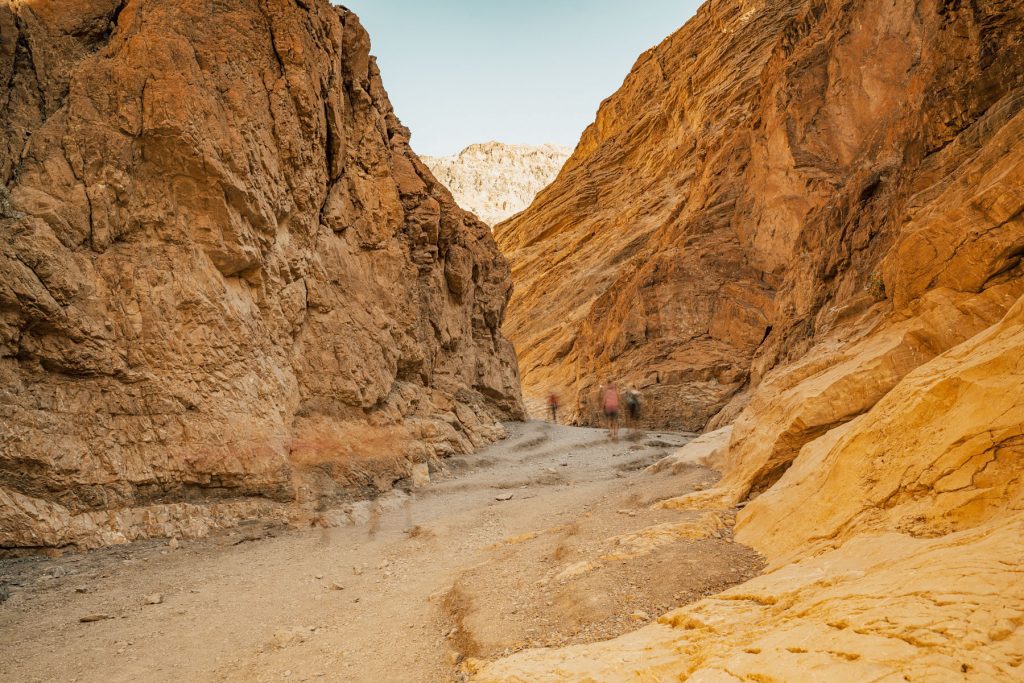
#5. Gower Gulch Loop in the Golden Canyon
- Difficulty Level: Moderate
- Distance: 4 miles
- Estimated Hiking Time: 2 hours
- Elevation Gain: 675 feet
The Golden Cayon – Gower Gulch Loop takes you through the most spectacular landscapes Death Valley has to offer. The trail is easy to follow and dotted with informative signs that better explain the geological formations in front of you.
The trail takes you though colorful rock faces and leads directly to the Red Cathedral (you’ll know it when you see it, believe me). Hikers are able to choose their own adventure by hiking into canyons along the trail.
With so much variety, it’s no wonder that the Golden Canyon is often considered one of the best hikes at Death Valley National Park.
Fun fact: Some Star Wars scenes were filmed in the Golden Canyon!
Tip: Come early because the parking lot fills up very early.
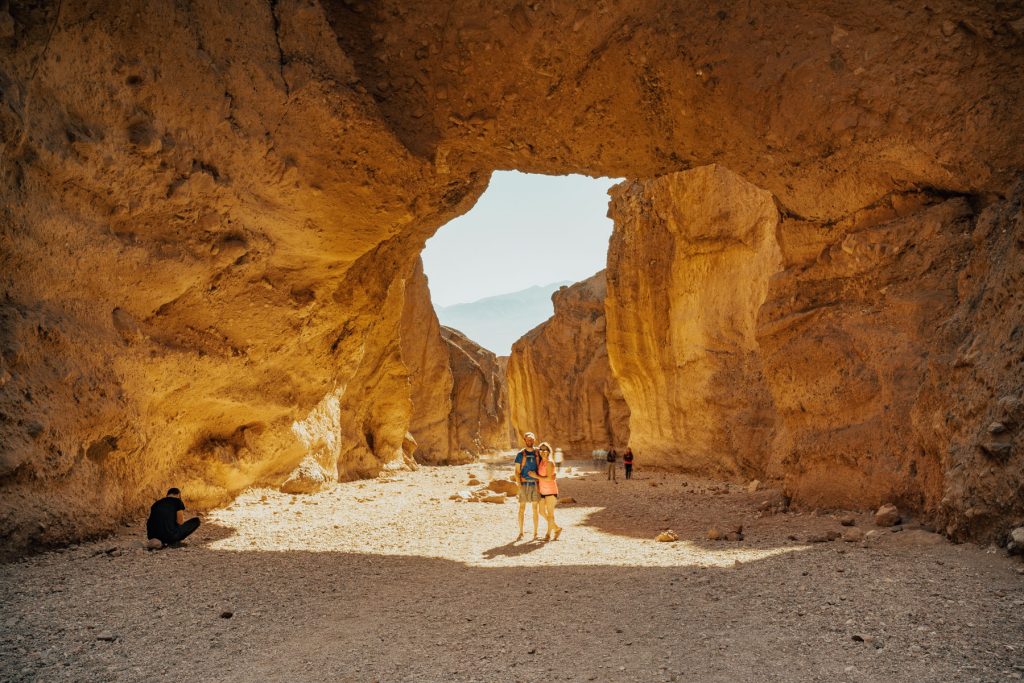
#6. Natural Bridge Canyon Trail
- Difficulty Level: Easy
- Distance: 1 mile out and back
- Estimated Hiking Time: 45 minutes
- Elevation Gain: 85 feet
Natural Bridge is an easy 2 mile hike that leads you to ….. you guessed it, a natural bridge. The trail is well marked, you can’t miss it.
You’ll follow a gravel path up a small hill and into a canyon. You’ll notice the canyon get narrower before opening up under the natural bridge.
After you’re done admiring the bridge, you have two options. Either head back to your car or hike further down the trail to a dry falls (waterfall without water). 80% of folks choose to turn around at the natural bridge.
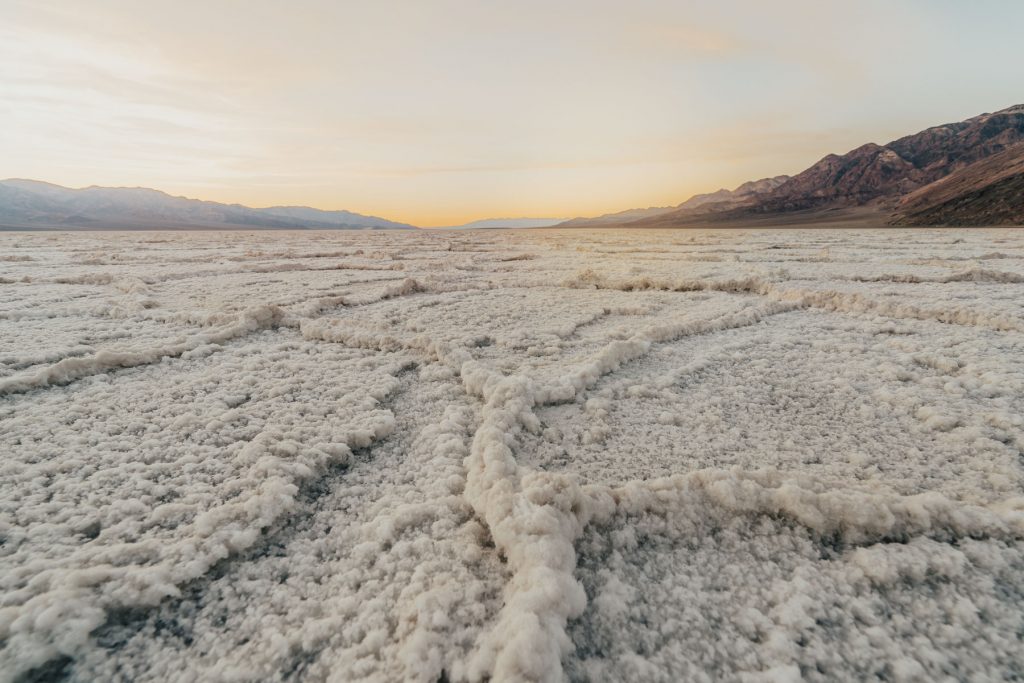
#7. Badwater Salt Flats
- Difficulty Level: Easy
- Distance: 1 – 5 miles
- Estimated Hiking Time: 30 minutes – longer
- Elevation Gain: Flat
We can’t talk about the best hikes in Death Valley National Park without mentioning one of the coolest features in the park — Badwater Basin! It’s the lowest point in North America (279 feet below sea level).
A boardwalk will take you to the edge of the salt bed. From there, you can step onto the salt crystals. But be very careful not to step on the “borders” because you will break them.
This hike will expose you to a bed of hexagon-shaped salt crystals that tell the tale of what once was. The best part of this hike is that you can go however far you please. If you want to hike to the other side of the basin the distance is 5 miles.
Tip: Do not visit Badwater Basin during the high heat of the day. There is absolutely no shade in the area.
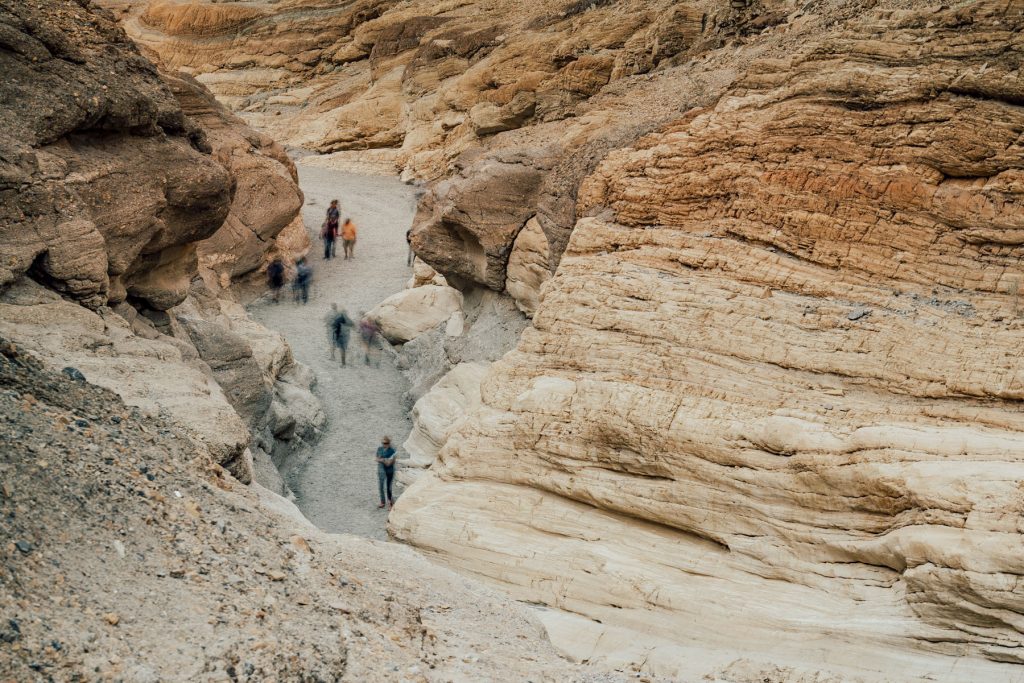
#8. Mosaic Canyon Trail
- Difficulty Level: Moderate/Difficult
- Distance: 2.6 miles out and back
- Estimated Hiking Time: 3 hours
- Elevation Gain: 1,200 feet
I could not believe my eyes while hiking the Mosaic Canyon trail. Thick slabs of marble lined the canyon wall, completely cool to the touch.
The trail starts at a rocky wash that leads directly into the heart of the canyon. You’ll run into narrows after less than 1/4 mile on the trail. The massive smooth walls will hug around you.
This is one of the better hikes in Death Valley National Park during hot days because the canyon walls keep the temperature slightly cooler.
About 1.3 miles into the hike you will come across massive boulders. For the majority of people this is the end of the hike. However, for those looking to exercise their adventurous spirit – the party has just begun! Just make sure you’re wearing proper shoes — the rocks are slippery!
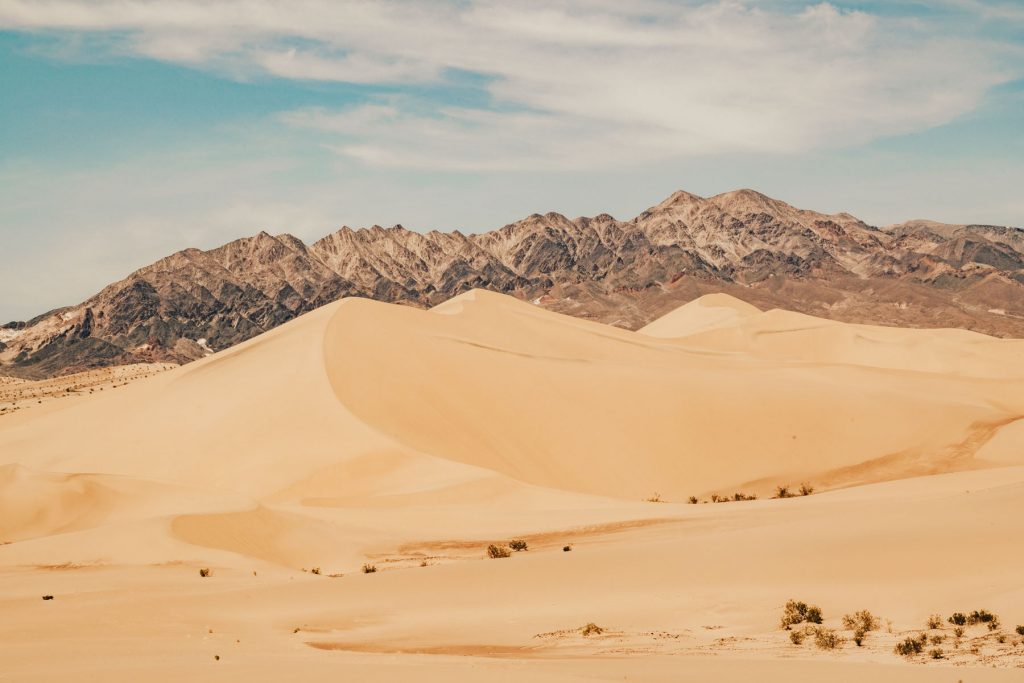
#9. Ibex Dunes Hike
- Difficulty Level: Moderate
- Distance: 6 miles
- Estimated Hiking Time: 4.5 hours
- Elevation Gain: 500 feet
- NEED VEHICLE WITH 4WD
Think solitude. The Ibex Dunes are hard to beat because of the solitude you can find. The dune field is hard to reach (you need a vehicle with 4WD) and the road is the roughest in the entire park.
We were surprised by how hard it was to drive down the road and I had to hold my breath – half expecting a flat tire by the time we arrived.
But once you get to the Ibex Dunes, the road melts away in memory. Plus, you’ll probably have the whole dune field to yourself, like we did.
The hike is semi-difficult because of the steep dunes, but if you push yourself, you’ll be rewarded with breathtaking panoramic views.
We hiked to the talc mine at the end of the trail, which was very cool to explore.
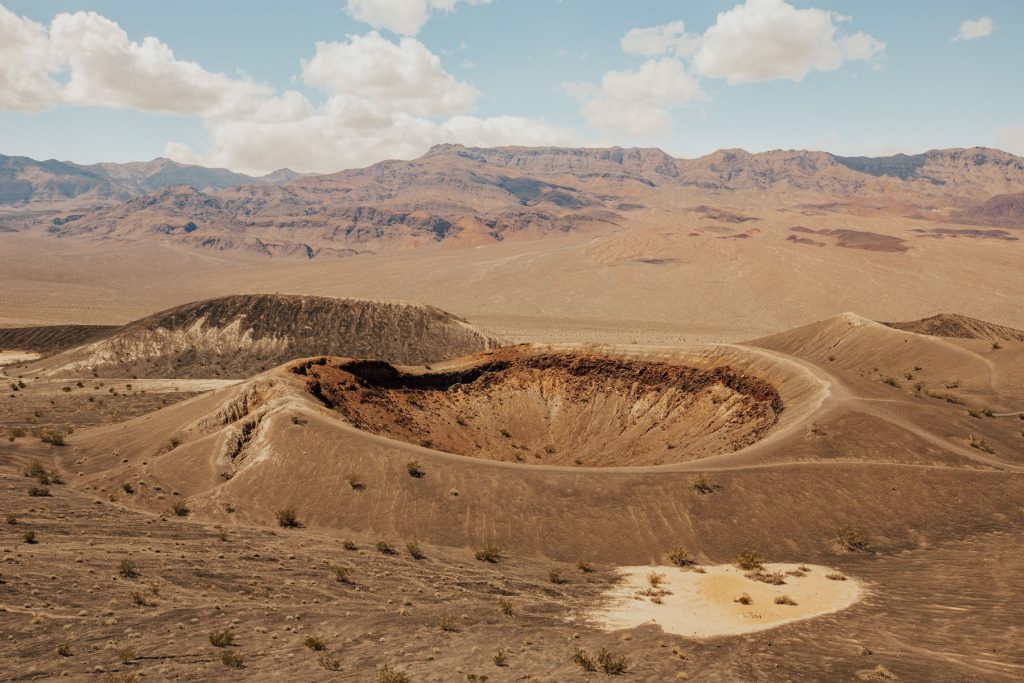
#10. Little Hebe Crater Trail
- Difficulty Level: Moderate
- Distance: 2.2 miles out and back
- Estimated Hiking Time: 1.5 hours
- Elevation Gain: 725 feet
- NEED VEHICLE WITH 4WD
Hiking to Little Hebe Crater felt like walking on mars! There’s three trails to choose from in this area:
- Hike into Ubehebe Crater (1 mile, 750 feet)
- Hike around Ubehebe Crater (3 miles)
- Hike to Little Hebe Crater (my recommendation)
If you’re not in a hiking mood, the view from the overlook is worth a visit alone. The geology in this area is so cool!
P.S. If you’re looking for an in-depth guide to Death Valley National Park (you little thrill seeker, you), make sure to read: 16 Things to Do in Death Valley.
Best Hikes in Death Valley National Park (Video)
My husband and I created a video of our time in Death Valley National Park. It won an award from National Geographic, plus you may notice an appearance by yours truly! Hope you enjoy. 😉
Best Time to Visit Death Valley National Park
The best time to visit Death Valley is between November and March when the temperatures are mild and hiking is possible.
If you’re interested in seeing wildflowers, different elevations experience blooms at different times of year, this helpful page tells you when things bloom.
Death Valley National Park Helpful Information
Driving & Gas
There are three gas stations in the park. The price per gallon is about $1- $2 more expensive than outside the park, so be prepared for that.
- Furnace Creek | Open 24 hours | Unleaded fuel and diesel
- Stovepipe Wells Village | Open 24 hours | Unleaded fuel ONLY
- Panamint Springs | Open 7am – 9:30pm | Unleaded fuel ONLY
We cannot stress enough just how BIG Death Valley is, make sure you ALWAYS have a spare tire, extra water and extra gas.
- Some points of interest are literally hours apart in each direction. You don’t want to get stranded because the average towing fee hovers at $2,000.
- What’s worse, you might be waiting hours or even days for someone to drive by and the best they can do is alert a ranger when they reach the visitor center – sometimes hours away.
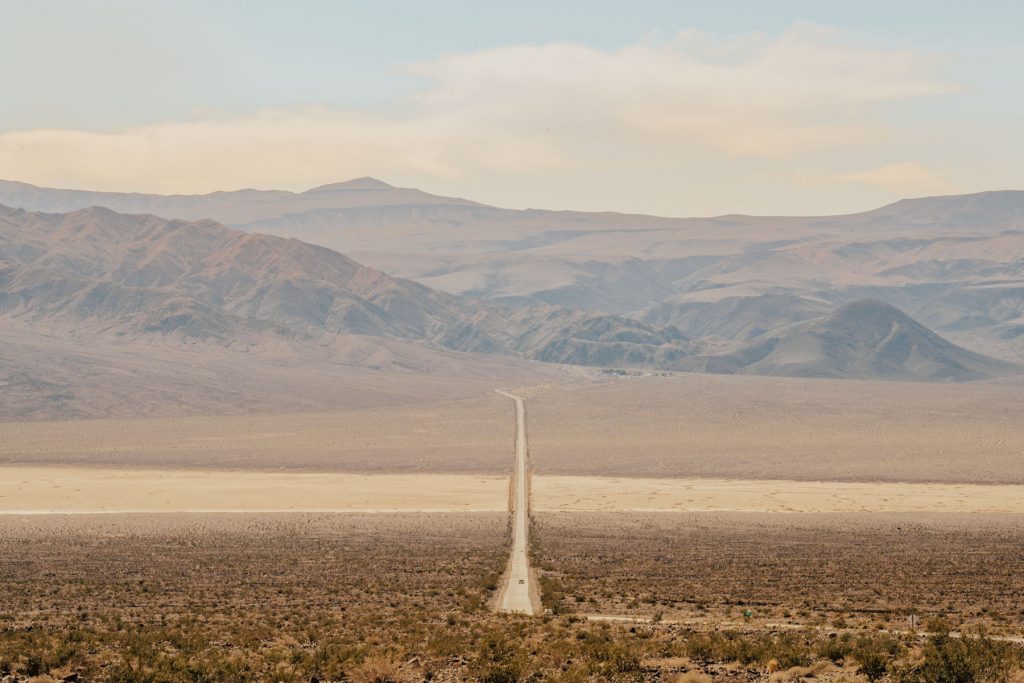
Lodging & Camping in Death Valley National Park
- There are three places to lodge within the park:
- We camped around and found it easy and enjoyable. If you are interested in camping too, there are nine designated camping spots to choose from, click here for information.
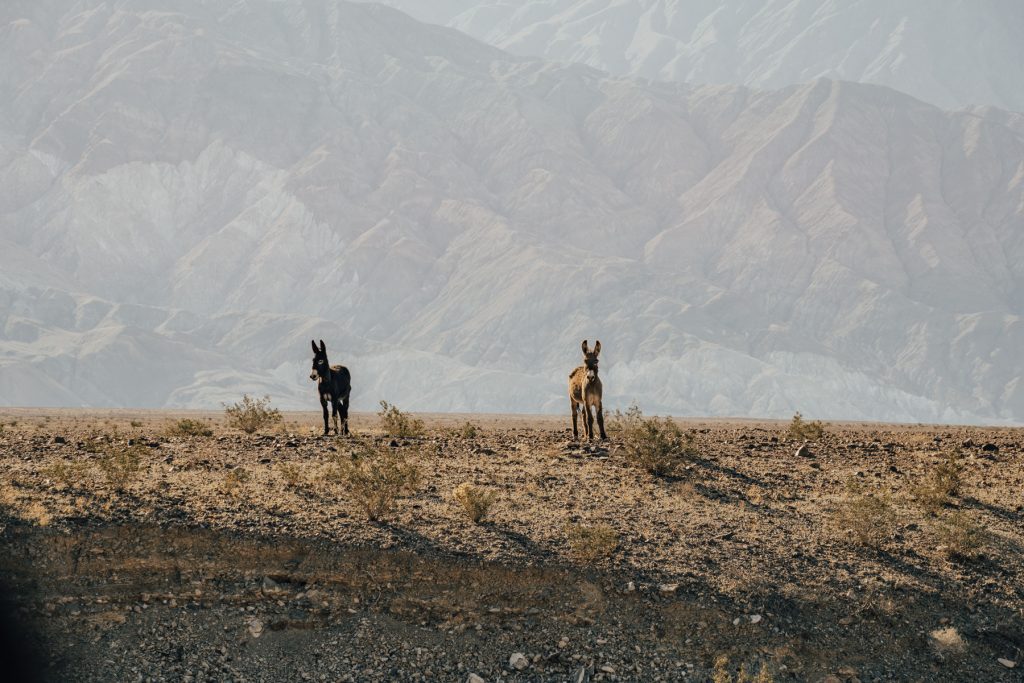
Best Hikes in Death Valley National Park (Post Summary)
In short, the BEST hikes in Death Valley National Park are:
- Zabriskie Point
- Mesquite Sand Dunes
- Darwin Falls
- Artist’s Drive
- Golden Canyon
- Natural Bridge Canyon Trail
- Badwater Salt Flat
- Mosaic Canyon
- Ibex Dunes
- Little Hebe Crater
Map of the best Death Valley National Park Hikes
Further Reading
- 17+ Best Things to Do in Death Valley National Park
- Exploring Eureka Sand Dunes
- Visiting Death Valley With 4WD
- Visiting Death Valley Without 4WD
Happy hiking!
Antonina
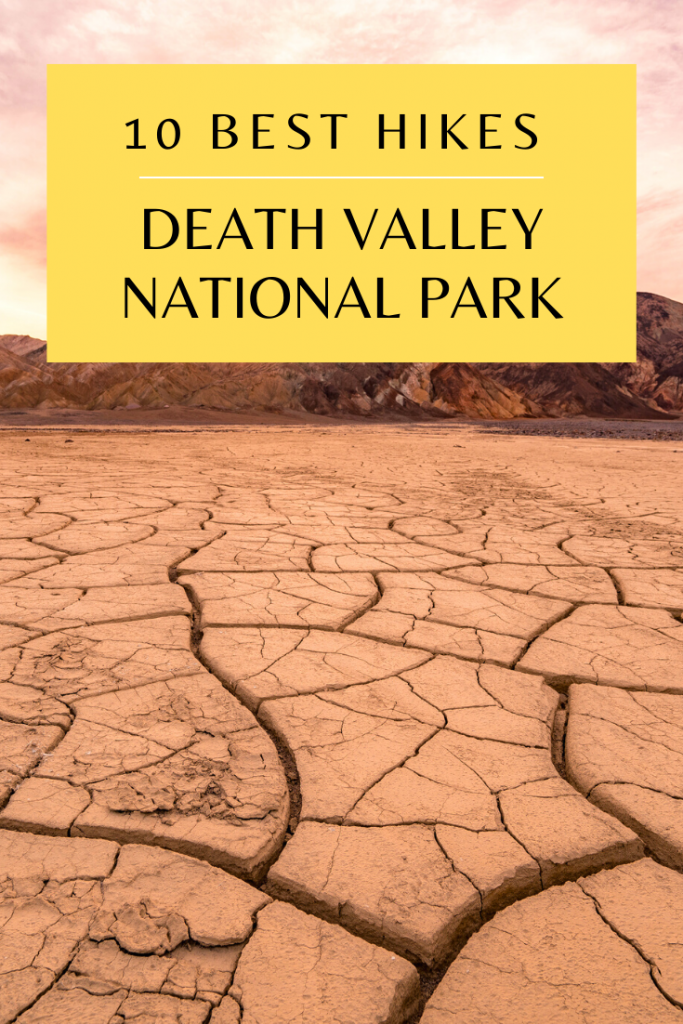
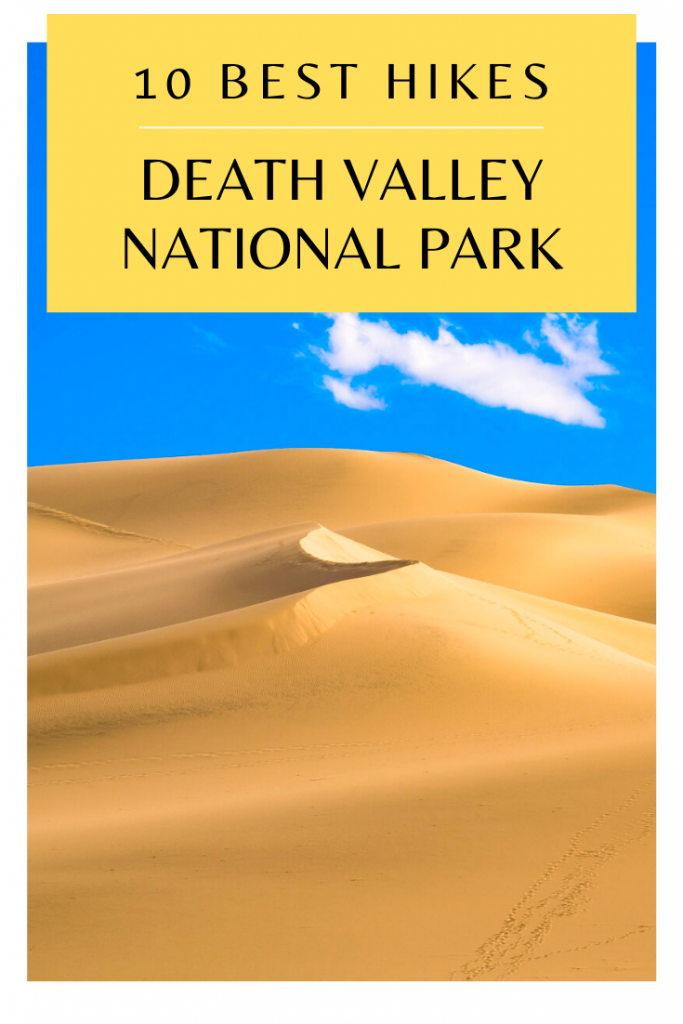
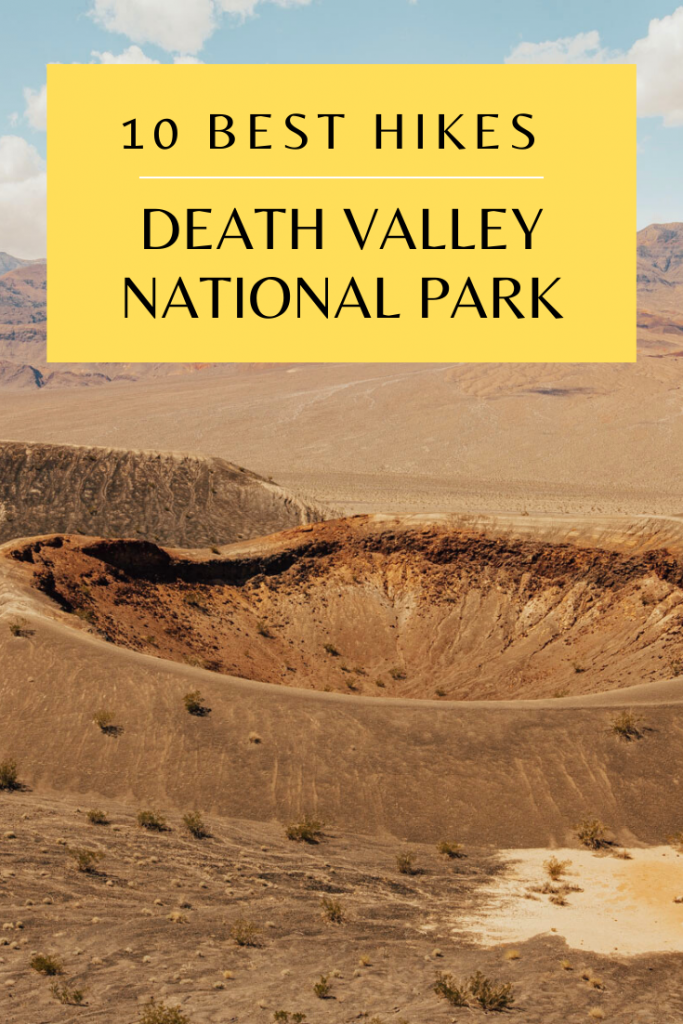
Death Valley National park best hikes, Death Valley National park best hikes, Death Valley National park best hikes, Death Valley National park best hikes,
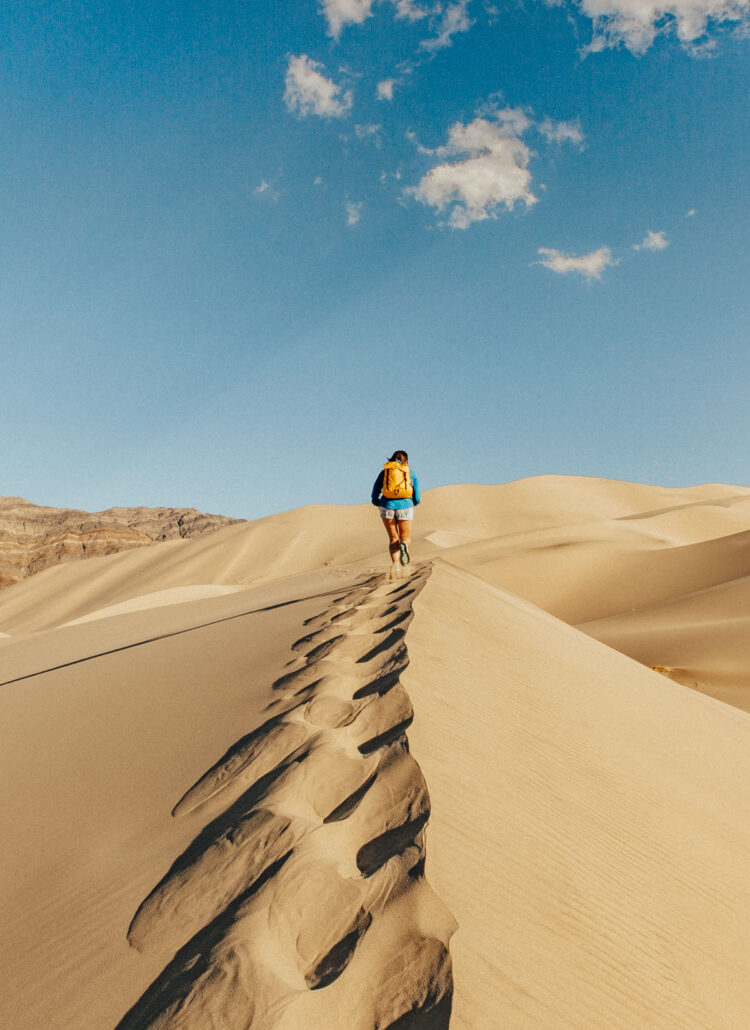
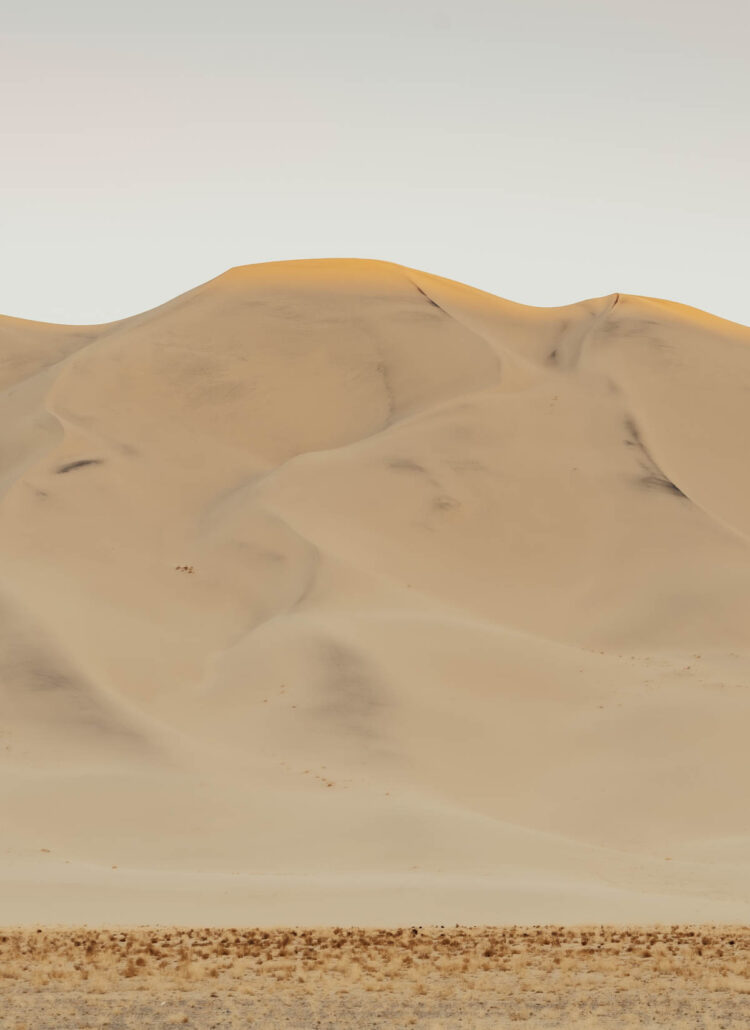
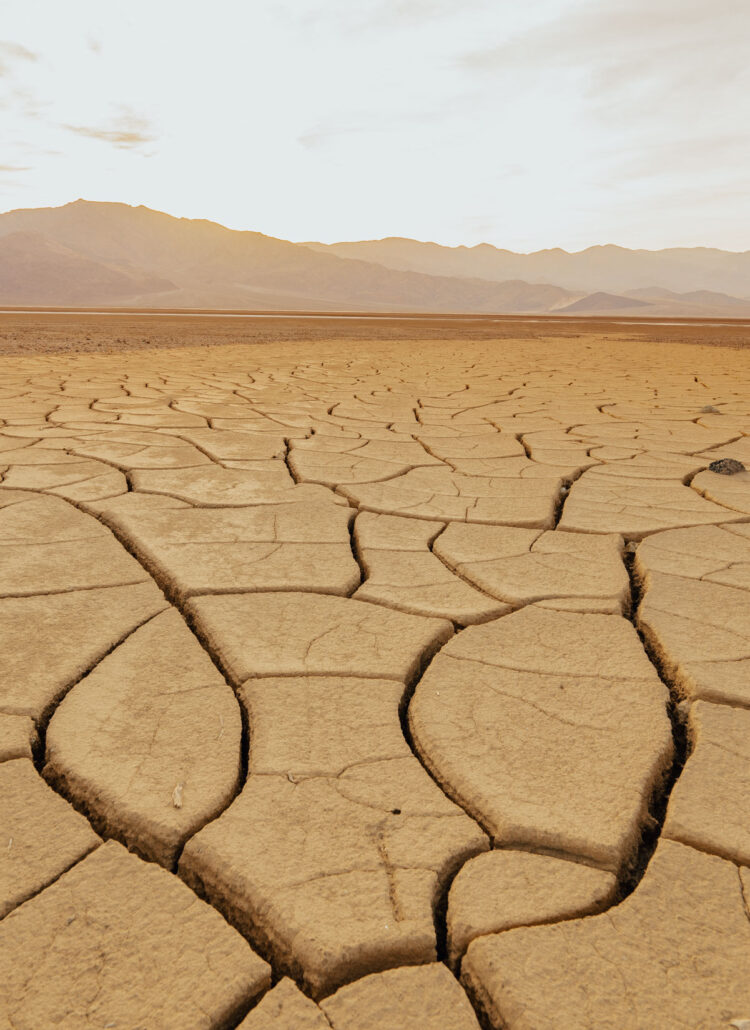
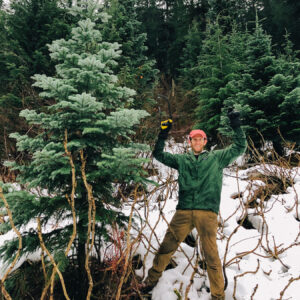
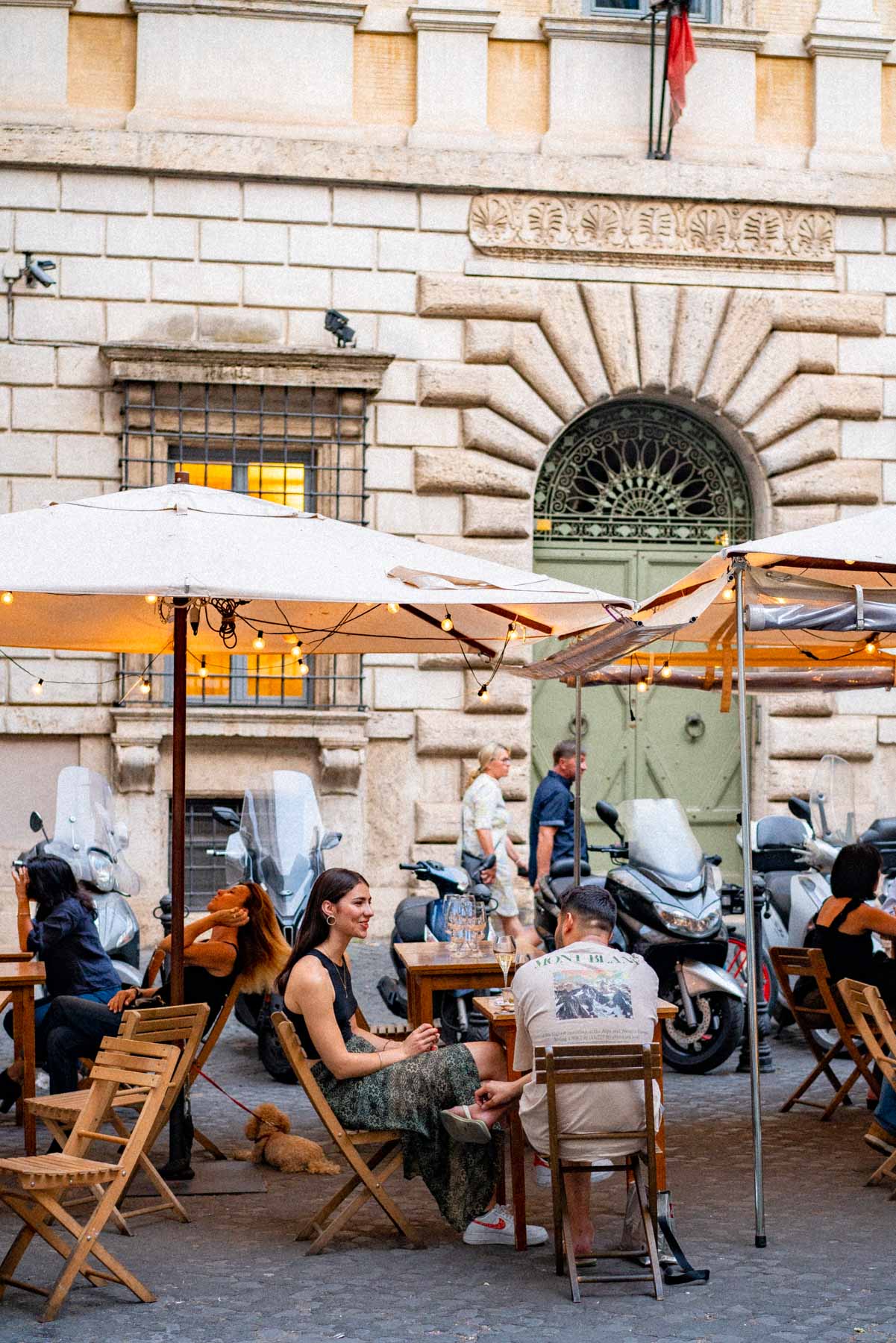
Here is our hike around Ubehebe Crater. Also perhaps in the top ten: https://youtu.be/LwODazmNCuA
All good spots, but you didn’t even scratch the surface of hikes.
Jim, I’d love to hear which hikes I missed, I’m sure other folks would love to know too. Please share with us. 🙂
This is a great account for first-timers to Death Valley. I might consider changing the title of your article to 10 must-see places in Death Valley. There are so many cooler places for hiking than what is mentioned, but as first-timers, you definitely have to check out the spots you listed to do some casual hiking.
Hello Antonina,
Your Death Valley tips are excellent and we would love to do most of the hikes you have outlined. We are scheduled to visit Death Valley in December 2021 and would love to bring a print out of this excellent resource of information as we know that cell service in DV is spotty to nonexistence so might not be able to access the internet while we are there.
Unfortunately we are unable to print your fabulous outline on the great hikes in DV. Is there another way we can access or print this to have it handy for our trip? (without accessing the internet while we are in DV)
Your favorable reply is greatly appreciated.
Hi there Ramon,
Thanks so much for the kind words. I’ve copied a link here to a simple downloadable version of the guide. Let me know if this works for you.
Downloadable Death Valley Guide: Click here
Best,
Antonina
Jim was right. There are many more hiking trails in the mountain ridges on both sides of the valley. You can see them with Google Earth.
Perhaps the most significant ones not on your list is the Wildrose to Telescope Peak Trail. Also, Titus Canyon from parking lot to Leadfield. That’s an easy day hike. Also Cottonwood/Marble Canyon. There’s the Panamint City (Surprise Canyon) that starts from BLM land, but ends up within the National Park boundary.
These are all very popular trails with easy access.
Which hotel do you think would be the best to stay at to see these hikes? Or are they far apart and would just have to drive ?
this was sooo helpful thank you
Not knowing the area, and not having two weeks to explore, do you have a suggested itinerary for which path to drive, which hikes to do, and the specific order to do them in a 2-day visit this coming November? We are also looking at lodging within the park, possibly at the Oasis. We are normal hikers (not backpackers) that are comfortable with hikes that are up to eight miles round trip, but not sure time allows for all of your top ten hikes in the 2 days? Thanks so much for your helpful information.